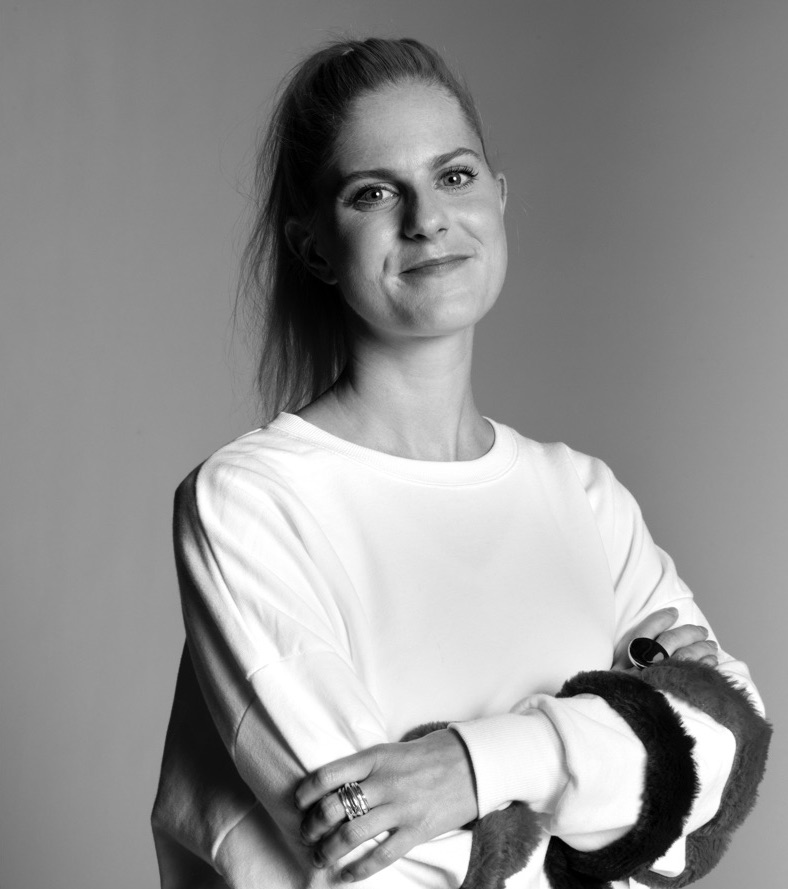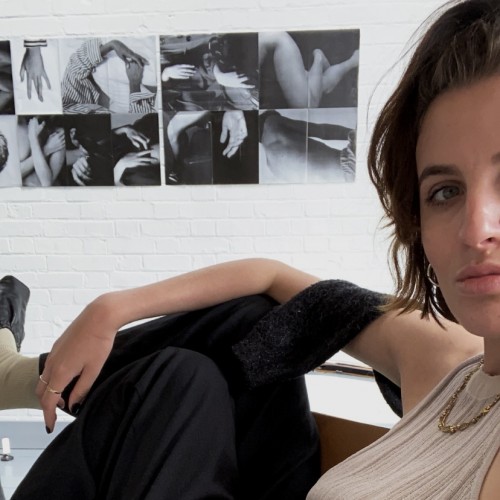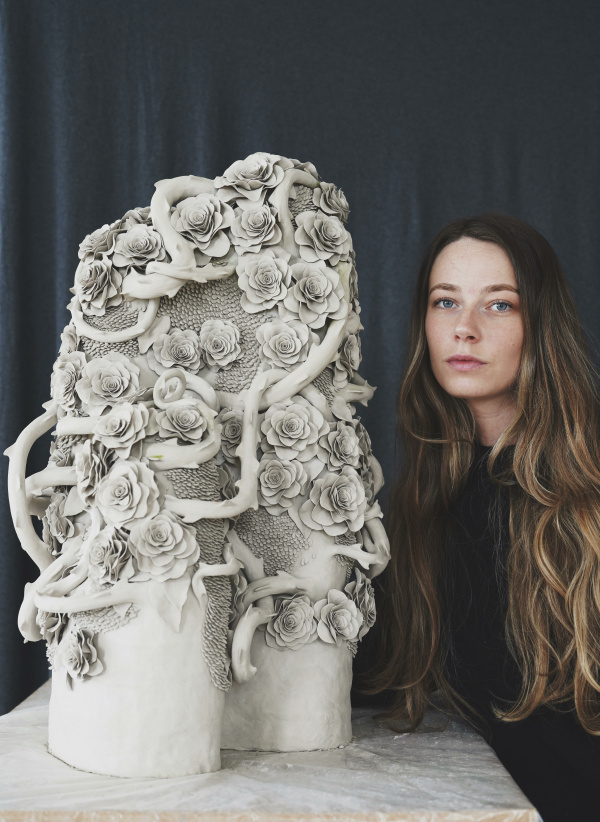Read Time 8 minutes
Embracing absurdist photography in times of flux
Albert Camus said that ‘the realisation that life is absurd cannot be an end, but only a beginning.’ It is in this way that absurdism can save us from nihilism, and absurdist art which imagines an alternative world presents a powerful coping mechanism when the real world is in crisis.
J’Nae Phillips tells us more.
When I stepped into Carlijn Jacobs Sleeping Beauty exhibition at Foam in Amsterdam, I felt like I stumbled into a parallel universe where reality was wearing a mask. The walls were lined with images of fashion models seen through a goldfish wine glass, a robotic meta-human lying on silk sheets, and a part of the exhibit was dedicated to photographs that experiment with AI. As I wandered through the corridors of the canal townhouse it dawned on me: avant-garde and absurd photography isn’t merely a form of artistic expression; it’s a mirror reflecting the absurdity inherent in our own lives.
In times of crisis, absurdism starts to trend – and for good reason. Absurdism embraces the absurdity of existence without succumbing to despair, advocating for the creation of personal meaning and significance in a chaotic world. It gives us something to believe in when the world around us looks bleak.

According to Albert Camus, a French Algerian philosopher who coined the term Absurdism, the purpose of the absurd is to challenge the prevailing belief in life’s inherent meaning. In a world where traditional religious and philosophical frameworks fail to provide satisfactory answers to existential questions, photography and art explore the absurd condition of the current human existence. Just as Camus confronted the absurdity of Sisyphus endlessly rolling a boulder up a hill, contemporary photographers and artists capture moments of ambiguity, paradox, and fleetingness. Through their lens, they reveal the inherent absurdity of life.
‘In challenging and uncertain times these aesthetic movements occur for a few reasons,’ says Selin Clayton, Futures Analyst. ‘For one, it provides an escape from real experience and acts as a mental break from harsh realities. Specifically if an image is unrealistic or dreamlike, it removes the sense of looming danger if only just for a minute. These movements also provide an expression of complexity, allowing viewers to explore and process their own emotions and conflicting thoughts.’
Absurdist photography disregards logic and defies convention. It blends elements of beauty, melodrama, and weirdness in equal measure. ‘Surreal and absurdist photography can challenge traditional notions of reality by intentionally distorting, exaggerating, or subverting elements of the visual world. By deconstructing familiar elements of the real world and rearranging or recreating them in unexpected ways, the viewer’s understanding of reality is challenged and places them in a position to perceive the world in a more abstract manner,’ notes Clayton.
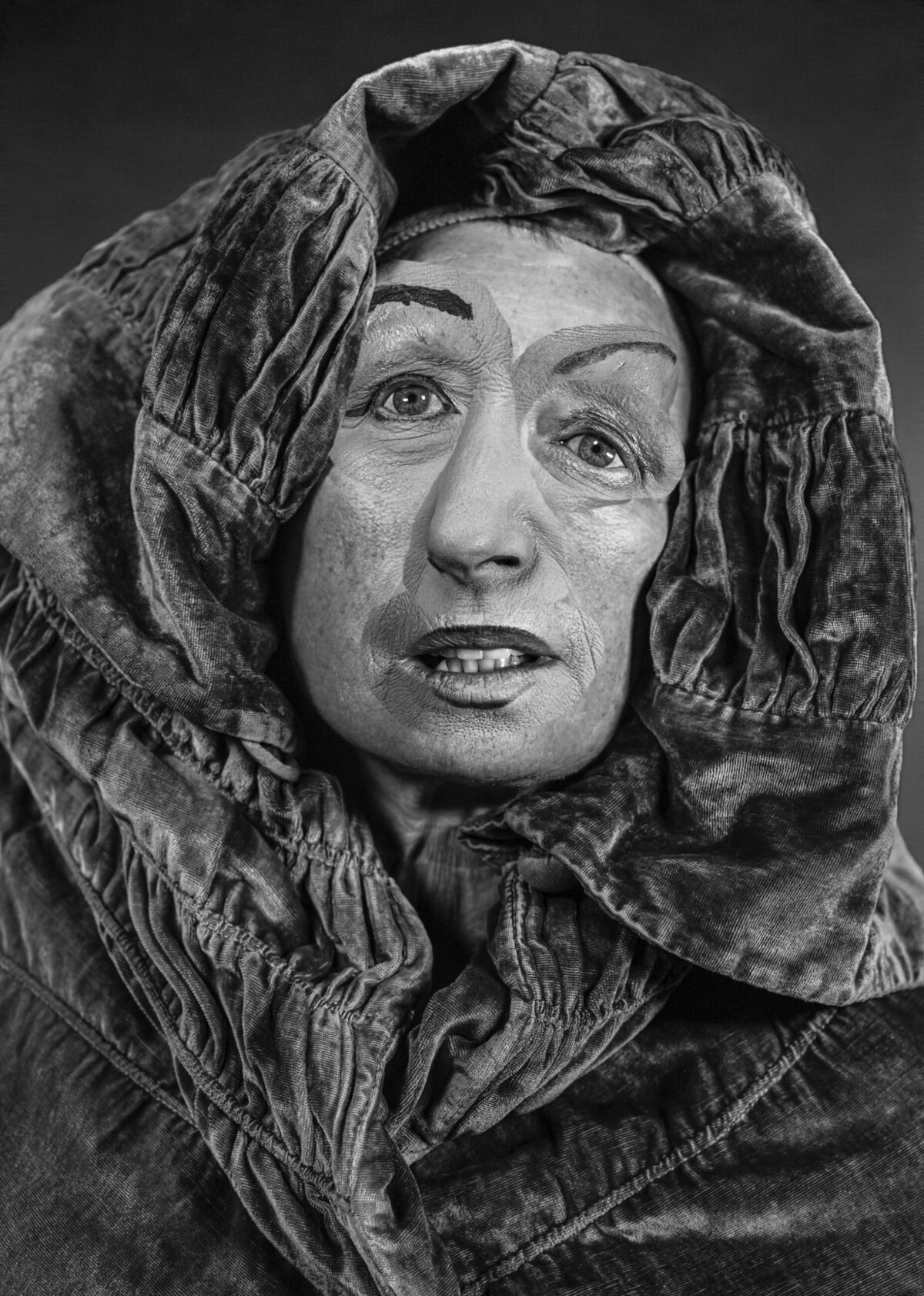
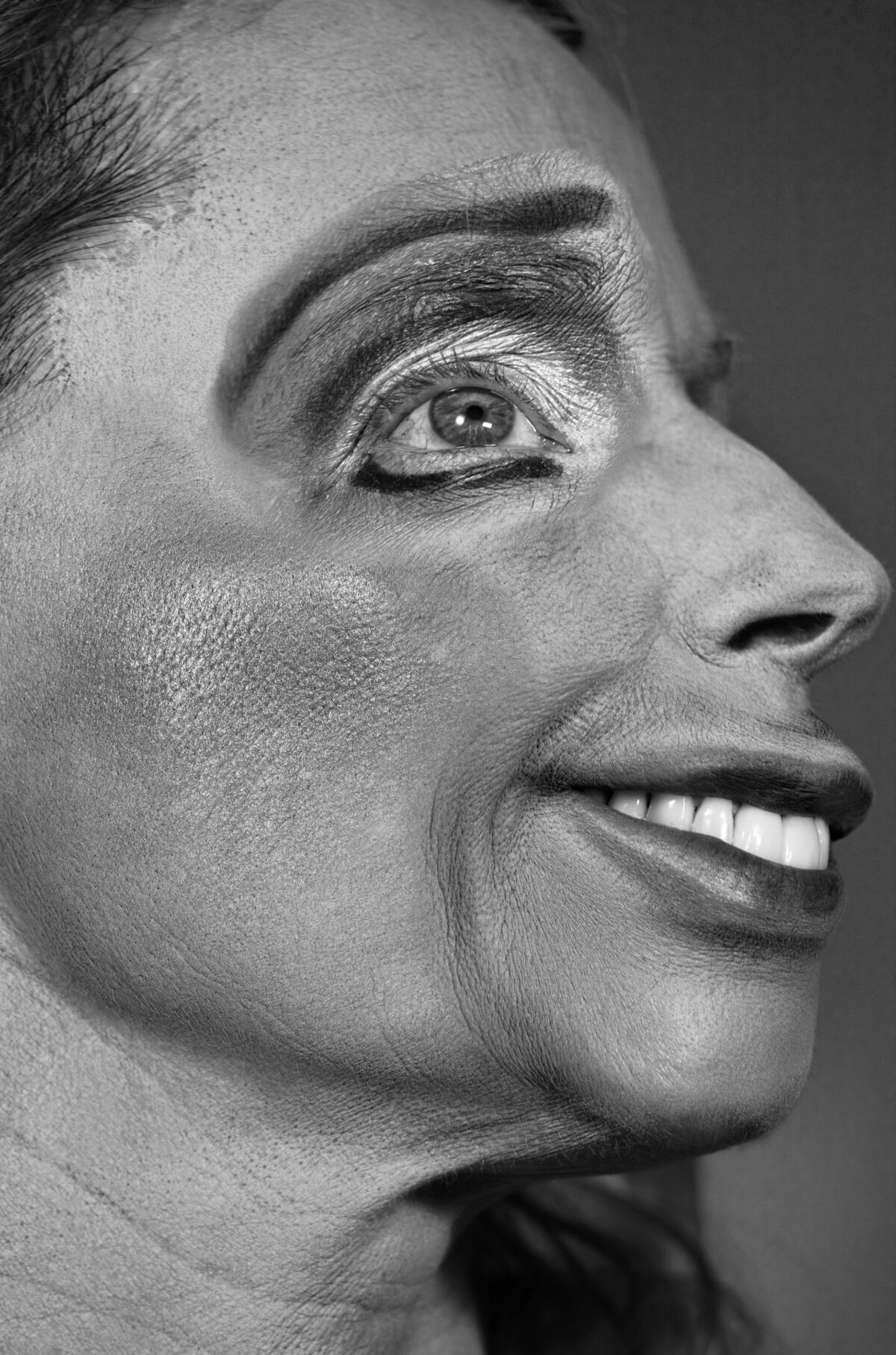

In this very absurdity lies an invitation to create our own meaning. Cindy Sherman echoes Camus’s call to confront the absurdity of existence head-on, challenging us to find meaning in the act of living authentically amid life’s inherent irrationality. With an exhibition at Hauser & Wirth [New York] running until March 16, the photographer explores the unattainable beauty standards women are held to through photo manipulation and juxtaposition. Sherman subverts the expected by exaggerating her wrinkles, elongating her features to comical proportions and using heavily outlined red pouts to push back against the societal obsession with looking picture perfect 24/7.
Kenya raised and Dutch native Vivian Sassen uses photomontage, an absurdist feel and Surrealist techniques to distort and disorient time and space. Her work is colourful, mysterious, and hyperrealistic all at once. For AnOther Magazine Sassen photographed Euphoria star Hunter Schafer levitating mid-air. For a Nike x Jacquemus campaign Sassen photographed models sitting on water in a mirrored, otherworldly reflection, and Sassen’s colourful work has also been juxtaposed with Vancouver’s urban environment.
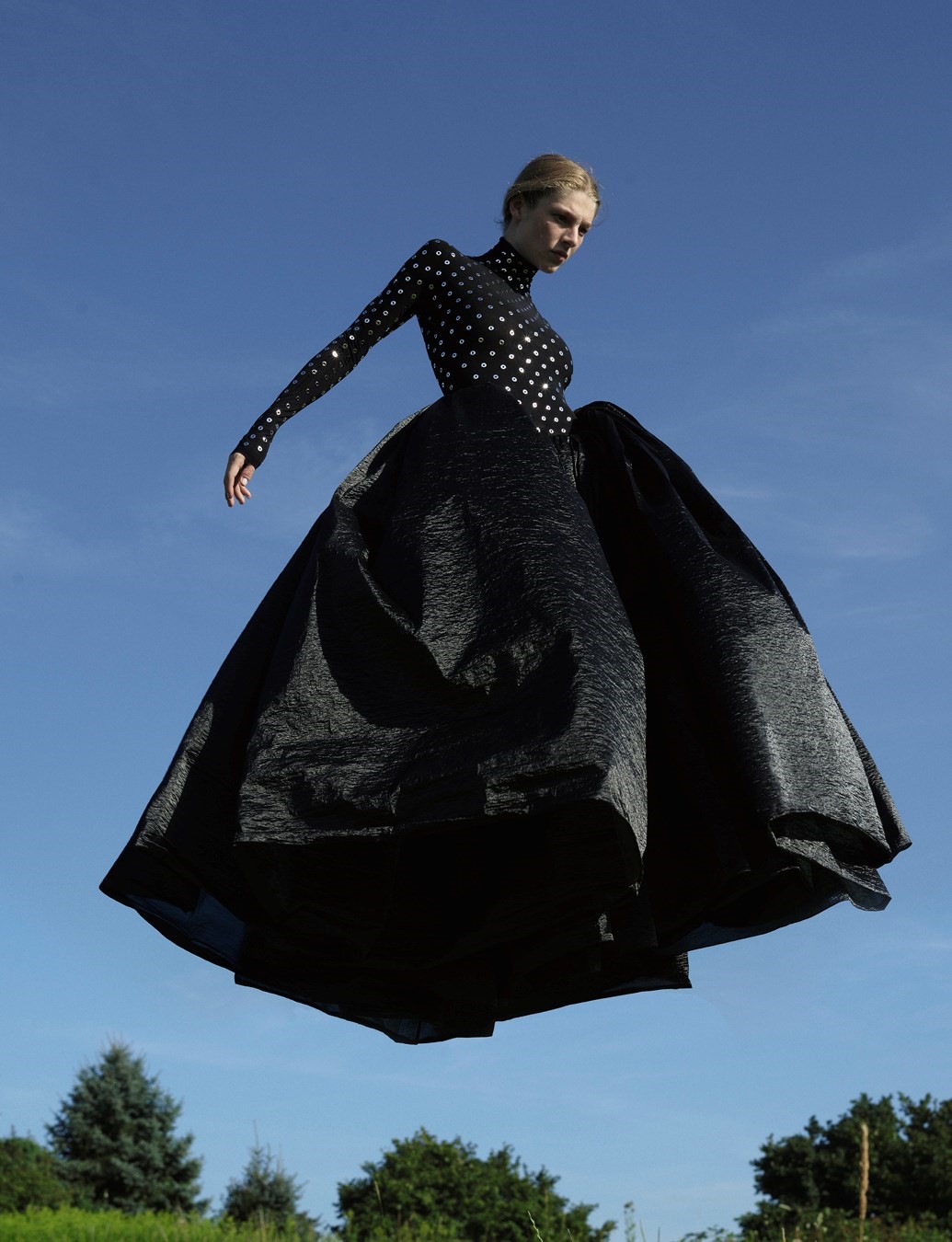
‘Surreal and absurdist photography also frequently uses unconventional perspectives, compositions and angles which can encourage viewers to reconsider habitual ways of seeing and interpreting the world,’ Clayton explains.
Absurd photography and art plays heavily with dream-like imagery. By mirroring the otherworldly sensations of dreams, it’s able to delve deeper into the human psyche. British photographer Cig Harvey’s work spotlights ordinary scenes with a dreamlike flair. From a photo series of an ever-changing, decaying dining table to an exhibition at the Fotografiska Museum in New York which explores humankind’s fraught relationship with nature, Harvey marries otherworldly realism with dreamlike absurdity that allows audiences to escape into a world they didn’t know existed.
In times of upheaval and ambiguity, and given the existential angst and global crises we battle on a day-to-day basis, artistic expressions often serve as conduits for reflection and interpretation. Through this lens, absurdism offers a window into our shared experiences as we search for meaning in a world where easy answers are elusive.
One such photographer capitalising on this moment is Aida Muluneh. Previously a photojournalist for the Washington Post, Muluneh now creates highly conceptual, stylistic and colourful Afrofuturist images that explore everything from war and peace to logical thought and introspection. Challenging norms and commenting on contemporary society in this way allows themes of absurdity to emerge as a potent force in uncertain times, putting a little more thought and substance into the machinations of the here and now.
Absurd photography and art can mess with your subconscious. The interpretation of this aesthetic style is part emotional, part psychological, and the meaning we derive is completely different from one person to the next. ‘We are innately curious, so I think deeper meaning can be found in work that is not as literal as some of other art styles,’ Clayton adds.

All of this speaks to the human experience. Through imaginative compositions, unexpected juxtapositions, and distorted perspectives, photographers such as Jacobs, Sherman, Sassen, Harvey and Muluneh evoke a sense of disorientation and wonder in us, mirroring the surreal and challenging landscapes of our inner selves. Much like our own thoughts and dreams, their imagery defies logic and invites viewers to delve deeper into the mysteries of the subconscious.
Absurd photography is timeless, radical, and firmly ingrained in the greater collective consciousness. And perhaps the greatest thing about it lies not in capturing what we see, but in revealing what we subconsciously overlook. Whimsical absurdity reflects the inherent contradictions, uncertainties, and paradoxes of human existence. It reminds us that reality is often stranger than fiction and that our understanding of the world is forever shaped by the interplay of reason, imagination, and the concept of the absurd.
END
subscribe for the latest artist interviews,
historical heronies, or images that made me.
what are you in the mood for?



